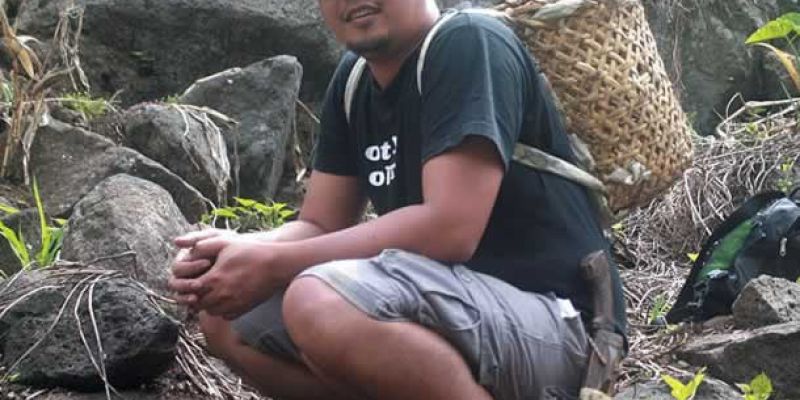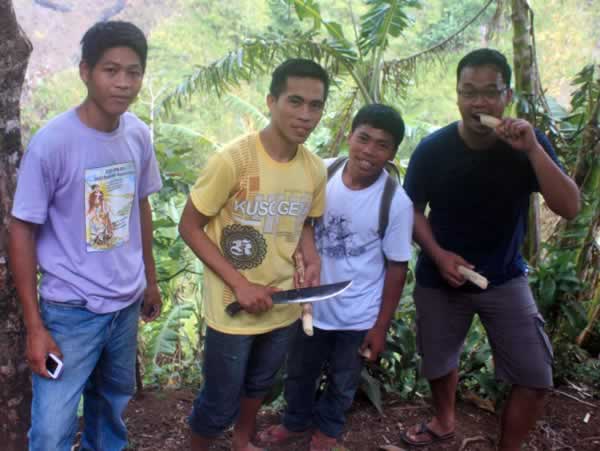
Immersion and Exposure
I usually spend my summer break walking the sands and enjoying the beach but this time around I decided to walk the hills of Don Victoriano Chiongbian, a town of Misamis Occidental, the Philippines, and enjoy the cool river waters of Salug.
After about six weeks of parish life as a deacon in my home parish of the Immaculate Conception in Iligan City, I left Iligan with a full heart. My jump-off point was the city of Ozamis where I stayed with Fr. Sean Martin, a Columban involved in various environmental issues like mining in the area.

Before reaching Don Vic, as it is popularly called, I went to Midsalip, a town of Zamboanga del Sur where Reynante a former Columban student resides. Midsalip used to be a Columban parish but is now under the Spiritan Fathers. A lone Columban Sister resides near the parish church. She works with the Subanen people, an indigenous group living along the Zamboanga peninsula and the neighboring towns. Midsalip is rich in minerals, and the Church, which includes the Subanen, has been actively protecting the environment from big-scale miners. The town is surrounded by the majestic mountains with Mt. Pinukis hovering over the smaller mountains. The watershed supplies water to the rich rice-fields below the mountain range. It is also sacred to the Subanen people. After spending two days in Midsalip, Reynante dropped me off at Molave to meet up with another Columban priest, Fr. Brendan Kelly, who is the parish priest of the Our Lady of Lourdes Parish in Don Vic. Fr. Brendan is involved in the Subanen ministry of the Columbans but is also working for the Episcopal Commission for the Indigenous Peoples. He can speak and understand Subanen, Cebuano and even Tagalog.
The parish used to be under the supervision of the Vincentians. It is part of the province of Misamis Occidental. On our way to the parish, Fr. Brendan shared that last year there were a number of people killed mostly related to politics in the area. One of them was an active catechist of the parish. Like most towns in the area, one finds a mixture of Subanen and Visayan people. The Visayans mostly occupy the lowland, or patag, while the Subanens live on the hills and mountains surrounding the valley.
I was introduced to three young Subanen farmers Rene, Ruel and Jonel who recently graduated from a 6-month course run by the MASIPAG organization. MASIPAG is a farmerled network of people's organizations, NGOs and scientists working towards the sustainable use and management of biodiversity through farmers' control of genetic and biological resources, agricultural production and associated knowledge. Their mission is to improve the quality of life of resource-poor farmers. With the idea of immersion and exposure, Fr. Brendan sent me to the mountains with these farmers. I took the challenge—and what an experience it was.

Two hours of walking, climbing and at times crawling took a toll on my not-so-young knees. On the first day we were able to cover the farms of Rene in Sitio Balanacan. Ruel's farm is almost a cliff that sits on the side of the mountain and their house is on top of the mountain. I can't imagine the difficulty of climbing up and going down the mountain to bring their products to town. It was already dark when we were able to return to the parish.
The next day, Jonel was excited to bring us to his farm. Jonel is the youngest of the three. He is fun and a bit short so people nicknamed him Dagul. He told me that the trip will be a lot easier compared to the trip we had yesterday. Trusting him, we left the parish at three in the afternoon.
The journey started out easy, but as we progressed the difficulty also progressed. I wish it were just like playing "Candy Crush." We had to cross one river three times. The water flow was fast and strong in most parts of the river so they had to assist me every time we encountered a river. At the last river crossing, I wanted to give up and just remain there. But by trusting them, I was able to cross the river again. The last stretch of the journey is a climb where one is almost facing the ground. When I saw the first house I was relieved and happy that we finally arrived.
We rested and prepared our dinner for the night—some freshly-picked vegetables mixed with a big can of sardines and noodles.
The village sits on top of a hill between two mountains. The wind was cold and chilling. The next day after breakfast we went out to help Jonel and his family pick onions. The harvested onions will be bundled into "bangan" which will sell for around 30 pesos to buyers in town but will be sold at a higher price in markets in Ozamis City. Jonel had to carry these bundles tied to a "bukag" all the way down the mountain into town. On the way we took some time to take a dip into the chilling waters of the river.
I have so much admiration and respect for farmers because of my experience with these three young Subanen farmers. They want to practice what they learned and someday encourage their fathers and more young people to practice natural organic farming.
Many of these farmers today are like slaves to various companies who have enriched themselves by preying on farmers with their designer seeds that first need fertilizers to grow, flower and eventually bear fruit. Then plants require more products like weed killers. These plants mostly have terminator seeds, which means that whatever seeds produced can no longer be replanted. The farmers have taught me that I can make choices just as they had chosen not to become slaves of these companies.
On the last day of my stay, I joined Brendan on his visit to the Chapel of San Isidro in Petia-anan. This place is along the border of Misamis Occidental and Zamboanga del Sur so that to get to the place it is closer to pass through Josefina where Don Vic used to be a part of a former Columban parish.

Earlier that morning Brendan asked me if I would like to give the homily. I was hesitant, but I obliged since it was an opportunity for me to share what I learned about my trip to Don Vic.
After the Mass, we had lunch and went home carrying the offerings of the people – bananas, coconuts and rice.
Fr. Brendan dropped me off in Ozamis. There I went to meet Fr. Vincent Busch whose work involves Subanen crafts which are products of Subanen scholars. They make mandalas, dreamcatchers, necklaces and cards. He is also involved in various environmental protection and indigenous peoples' concerns.
The Columban priests I met on my journey are my inspiration. They showed me that even if you are a stranger in a place, one can become at home if one begins to embrace the people – particularly their culture and their language, but I also found that it is specially important to embrace their struggles and their joys. Then one is no longer a stranger but a friend to them. I will forever remember the lessons I learned during this summer. I am grateful to the people I have met along the way. Let us support our farmers and indigenous peoples. They carry the burden of feeding us and treasuring our traditions.
Columban Fr. Kurt Zion Pala lives and works in Myanmar.


 The Columbans are a society of missionaries, including priests and lay people, who minister to people of various cultures as a way of witnessing to the universal love of God.
The Columbans are a society of missionaries, including priests and lay people, who minister to people of various cultures as a way of witnessing to the universal love of God.